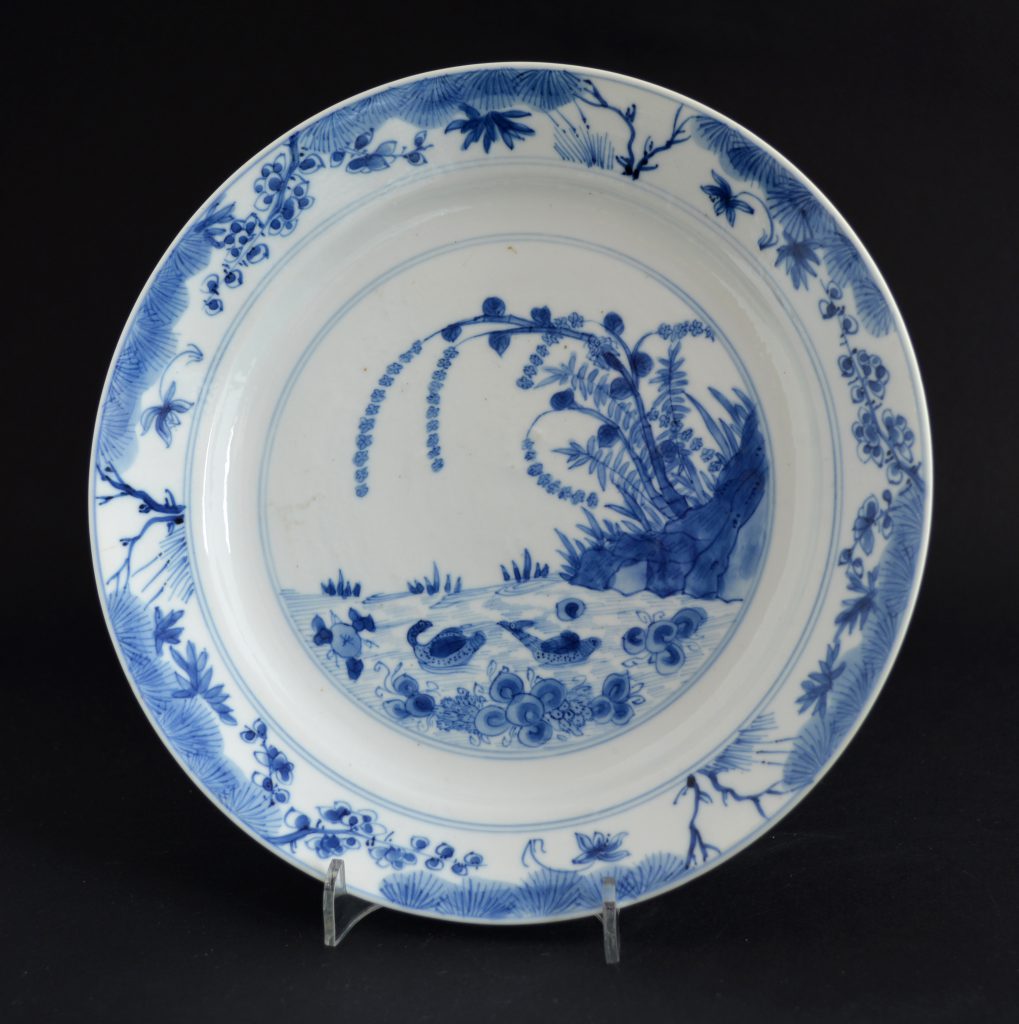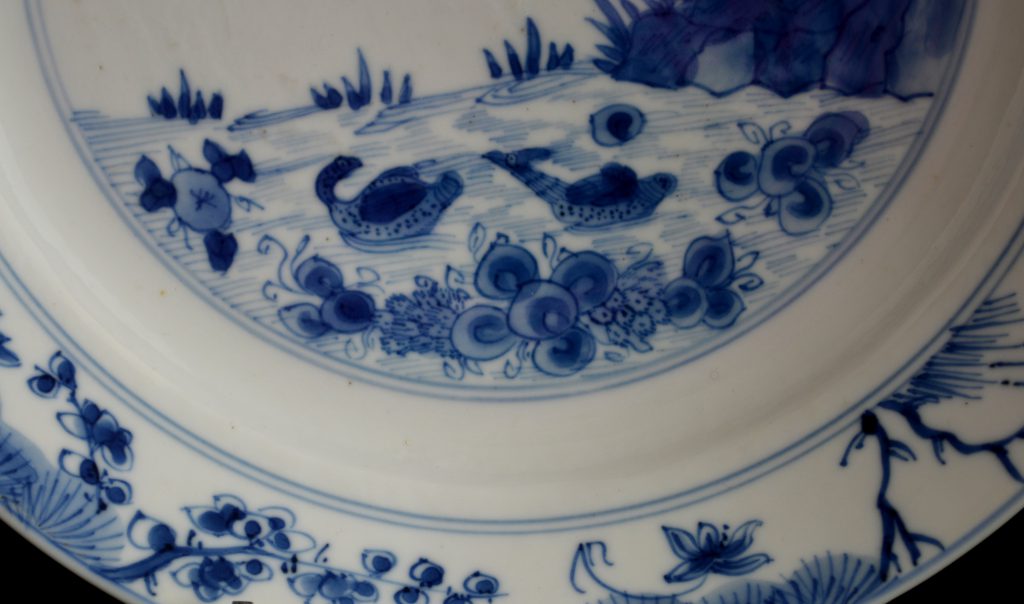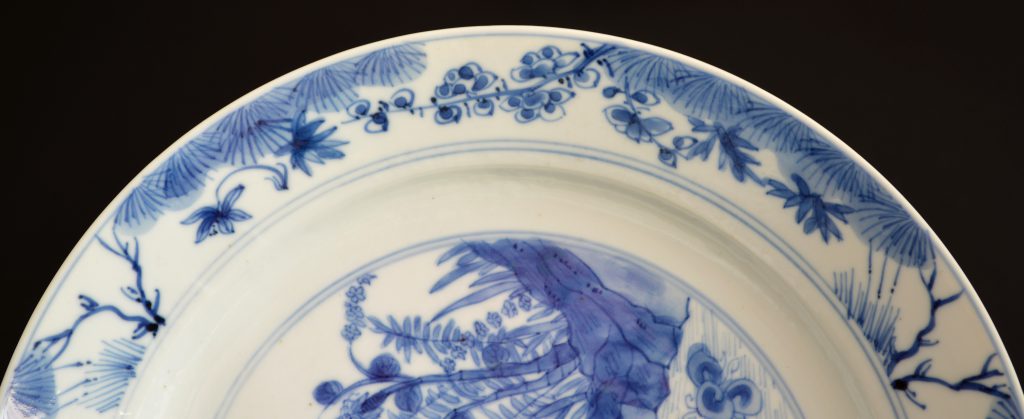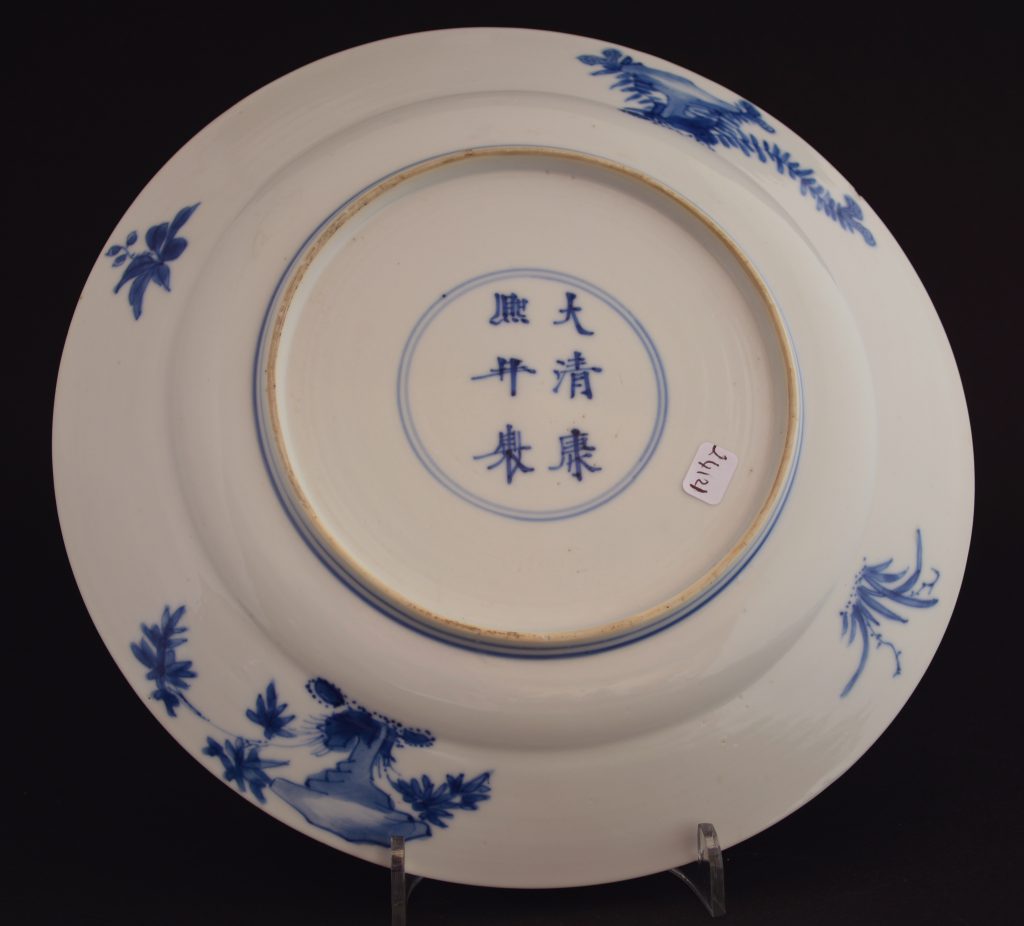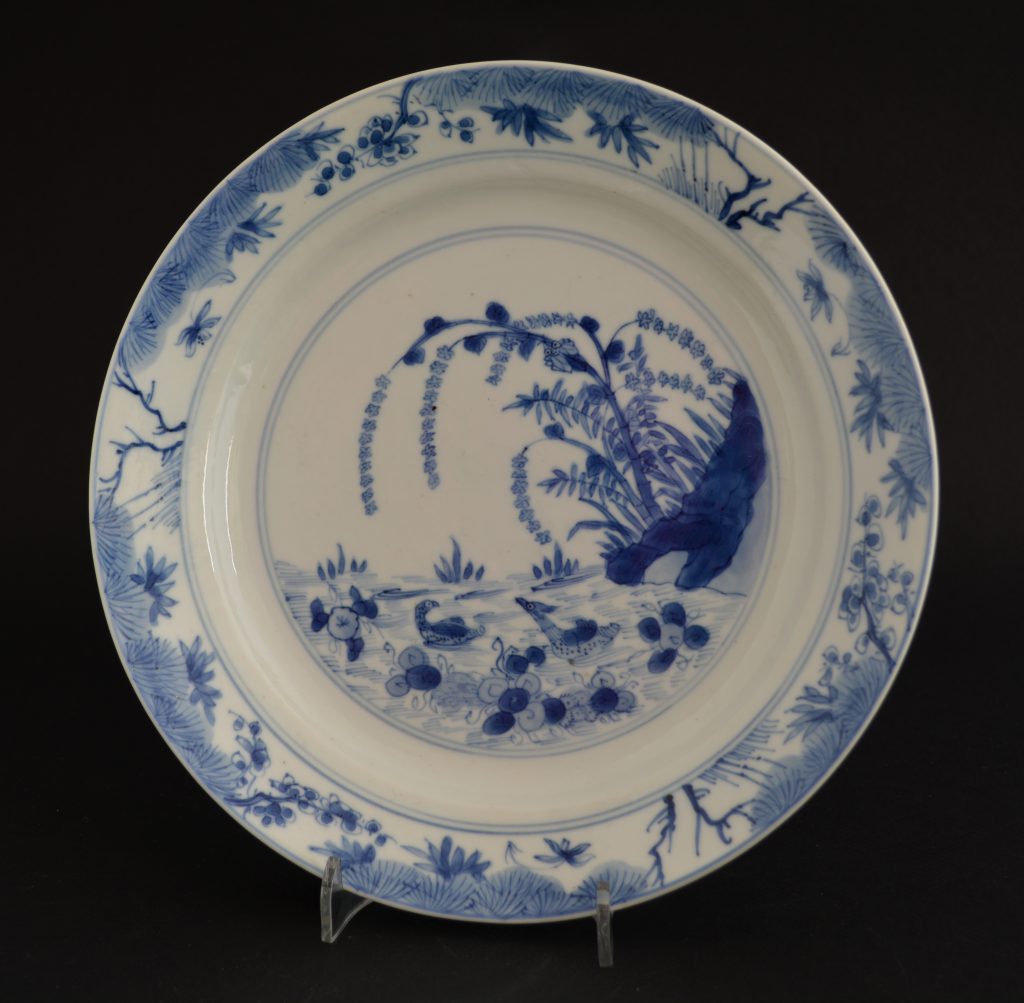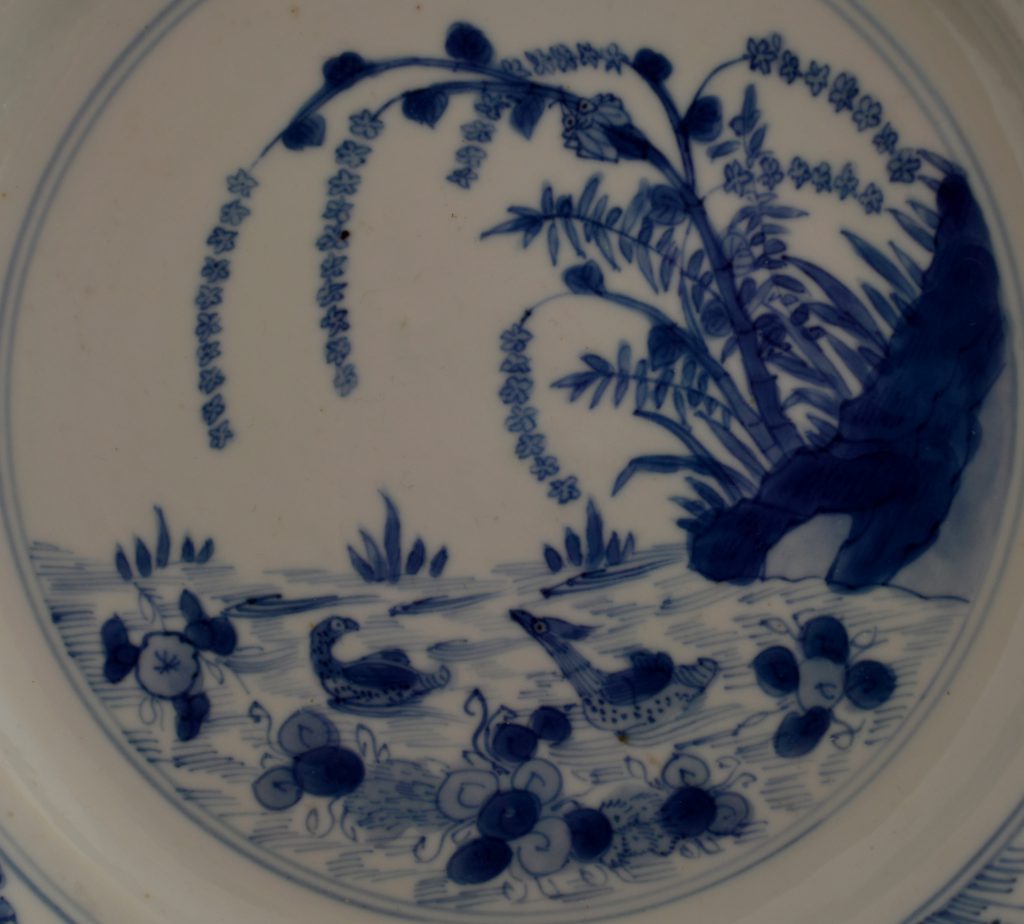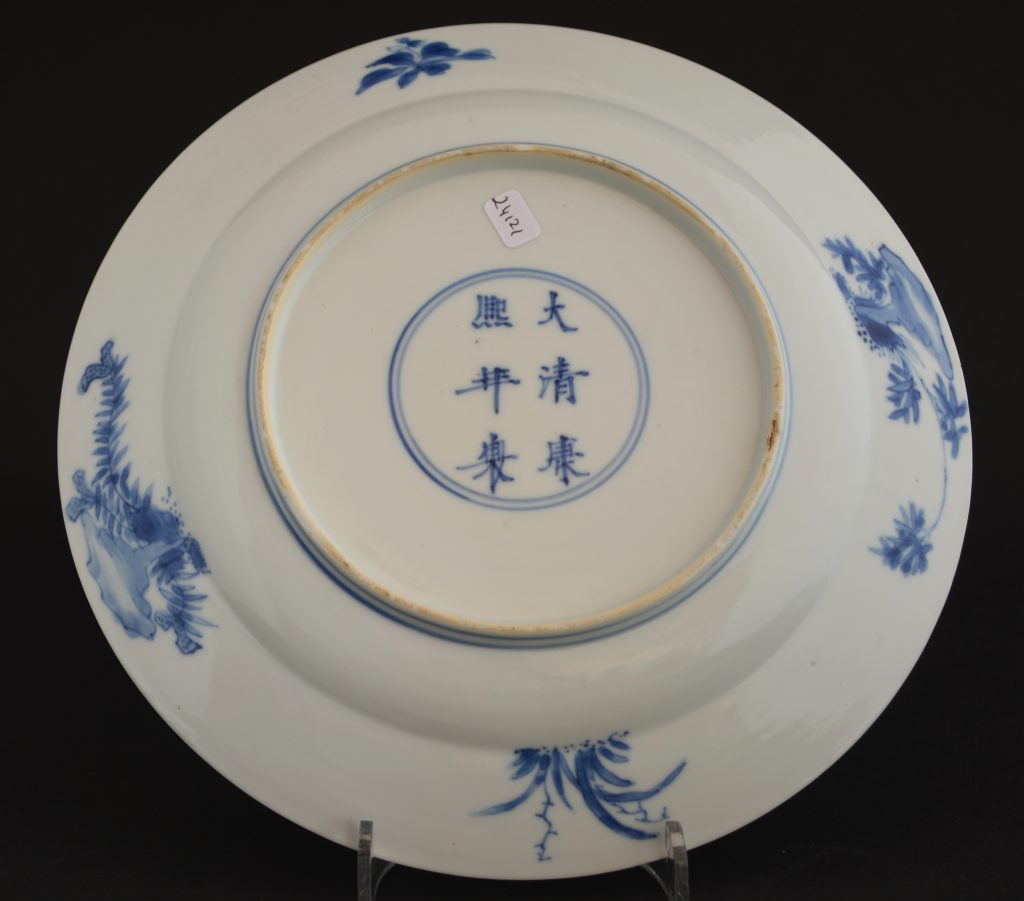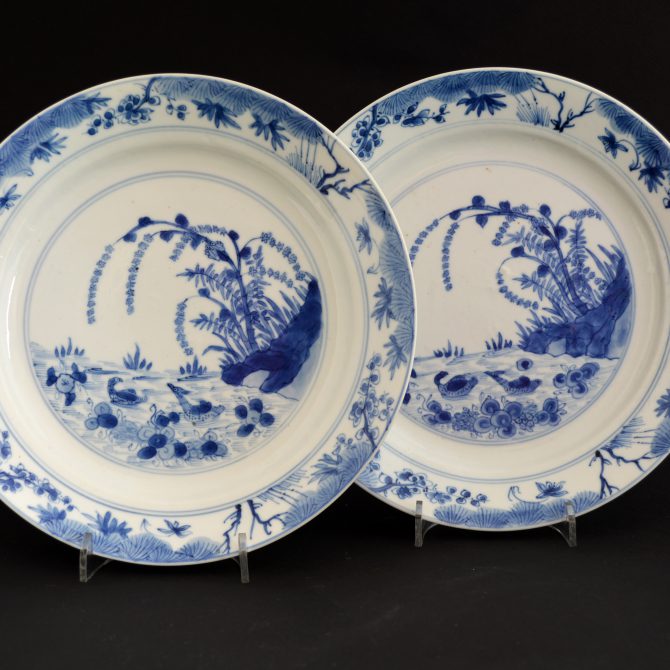
Kangxi Mark and of the Period 1662 – 1722, Pair of Chinese Export Porcelain Plates.
A Pair of Kangxi Blue and White Plates, the Base with a Non-imperial Kangxi Six Character Mark and of the Period (1662-1722) c.1690. Painted with a Pair of Mandarin Ducks Among Floating and Rooted Aquatic Plants. The Steep River Bank is Lush with Foliage Including Reeds Weighed Down by their Seeds. The Border is Bamboo and Pine.
SOLD
- Condition
- One plate with a very small shallow chip/ glaze chip to the back of the rim c.3 x 3 mm.
- Size
- Diameter : 20.5 cm (8 inches)
- Provenance
- N/A
- Stock number
- 24121
- References
- References : A pair of Kangxi Blue and White porcelain plates of this pattern were sold in 2004, see : Chinese and Japanese Ceramics and Works of Art, Christie`s Amsterdam 2nd November 2004 lot 163. For another plate of this design, also with a none-imperial Kangxi mark dated to c.1690 see : Exhibition of Seventeenth-Century Blue and White Porcelain and Copper-Red and Their Predecessors (S.Marchant & Son, London, 1997) page 68, plate 64. For a Kangxi blue and white plate of this design and with a Kangxi six character mark see our `Sold Items` number 23883.
Information
Mandarin Ducks :
Mandarin Ducks (Aix galericulata), are referred to by the Chinese as Yuan-yang, they are frequently depicted in Chinese art and are regarded as a symbol of conjugal affection and fidelity. A Chinese proverb for loving couples uses the Mandarin Duck as a metaphor: "Two mandarin ducks playing in water". The Mandarin Duck symbol is also used in Chinese weddings, because in traditional Chinese lore they symbolize wedded bliss and fidelity. The reason for this metaphor is because unlike other species of ducks, most Mandarin drakes reunite with the hens they mated with along with their offspring after the eggs have hatched and even share scout duties in watching the ducklings closely. Though even with both parents securing the ducklings, most of them do not survive to reach adulthood.
